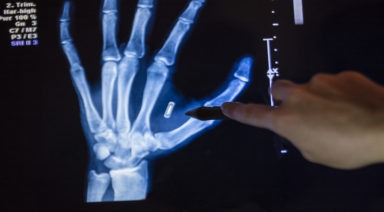NASA’s James Webb Telescope Can Detect Alien Biosignatures in 60 Hours

New technology may help scientists discover extraterrestrial life on other planets in just days.
Scientists at the Ohio State University have just announced that by using the James Webb Space Telescope, scheduled to launch this fall, they may be able to detect biosignatures on gas dwarf planets. These biosignatures, such as ammonia, could be a sign of life and with new technology, they may be able to make this distinction in as few as 60 hours. But what exactly do they mean by life?
Watch more:
Scientists to Broadcast New Message to ETs Across the Galaxy

Scientists are planning a new message for any potential extraterrestrials in the universe, by sending a cosmic ‘hello’ to any intelligent life in space.
When we make contact with extraterrestrials, how will we communicate with them? What if we sent them a message showing information about Earth, humanity, and our technological capabilities?
That was the idea behind the Arecibo message in 1974, designed by Frank Drake and Carl Sagan. The now-famous message was the most powerful broadcast sent into space, from the, now defunct, Arecibo Radio Telescope in Puerto Rico. The binary message consisted of our solar system, strands of DNA, a human figure, and chemicals related to Earth, among other things.
Now, nearly 50 years later an international team of researchers introduced a new message intended for extraterrestrials. The team, led by Jonathan Jiang of NASA’s Jet Propulsion Laboratory, felt it was time to update the Arecibo message since we have come so far technologically since 1974.
The proposed message dubbed “the beacon in the galaxy” will include some similar information as Arecibo, including, “[B]asic mathematical and physical concepts to establish a universal means of communication followed by information on the biochemical composition of life on Earth, the Solar System’s time-stamped position in the Milky Way relative to known globular clusters, as well as digitized depictions of the Solar System, and Earth’s surface.


































